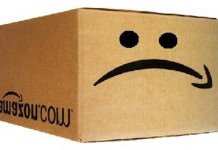 Kobo CEO Michael Tamblyn has talked to CNBC about the current state of the e-book and e-reader market, and where he sees it going in the future. Tamblyn shared some interesting insights into the place e-readers have in a market that is replete with tablets, smartphones, and myriad other e-reading options. (We covered his interview with Publishing Perspectives a few weeks ago.)
Kobo CEO Michael Tamblyn has talked to CNBC about the current state of the e-book and e-reader market, and where he sees it going in the future. Tamblyn shared some interesting insights into the place e-readers have in a market that is replete with tablets, smartphones, and myriad other e-reading options. (We covered his interview with Publishing Perspectives a few weeks ago.)
Tamblyn compared e-readers to premium stereo headphones—whereas many people don’t care that much about music and just use whatever earphones came with their phone, some love music enough that they want to have the best earphones possible, and invest in a premium set. In the same way, most folks will e-read on any old thing, but people who put reading at the center of their lives and want the very best reading experience possible will invest in a high-quality device just for that.
He also noted that, unlike most technological innovations, the rise of the e-reader was driven not by the young, but by the middle-aged and elderly—people who have reached the time in their lives when they have more time to devote to other things, such as reading. He noted that it shouldn’t be a cause for alarm that most readers were older, because when today’s younger people reach that age they’ll find more time for reading, too.
Other interesting information to come out was that Kobo had found 80% of e-book readers read on just one platform, and also that the most active readers tend to be regular purchasers of both print and e-books.
Tamblyn also touched on the rise of self-published e-books:
“Agents and publishers still dominate the market but self-published has become a real, viable channel,” Tamblyn said. “More often than not the customer who’s buying this doesn’t necessarily know they are buying a self-published book. They are so well produced, so well edited, so well designed that they just sit on the shelf with everything else.”
Looking at e-readers in this way could help to explain the inordinately expensive $290 Kindle Oasis. To people who aren’t huge readers, that could seem like a big chunk of money to put down on something that you can only use for reading books. But to someone who reads a lot of books and wants the best reading experience they can, it might be a worthwhile investment.
It’s worth remembering that the original Kindle cost $399 in 2007 dollars—the equivalent of about $468 today—and the Kindle 2 was only $40 less. Yet enough people bought them to kickstart Amazon’s e-reading revolution, and the third model fell $220 to just $139. So maybe Amazon knows exactly what it’s doing pricing a new reader in that range again.




























